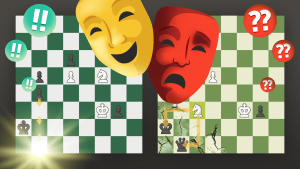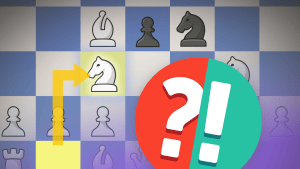
How to beat your opponent in 20 moves or less.
In the previous articles we discussed typical tactical patterns, good traps and bad traps, pawn promotions and Queen sacrifices. It is time to use this knowledge! Let's try to beat our next opponent in 20 moves or less! Of course we won't be able to achieve this goal unless our opponent helps us a little by committing one of the cardinal sins of chess openings (by forgetting about his development, 'pawngrabbing', refusing to castle, etc). Therefore, it is our duty to give him an opportunity to go wrong. What I mean is if you play a quiet opening variation (say the Queen's gambit), then even if your opponent makes a mistake the consequences are not going to be as deadly as if he commits a mistake in a sharp opening (like the Dragon Variation for example). So, wouldn't it be wonderful if we carefully prepared an opening mine field for our opponent where one single mistake can be fatal?
Today's article is the first part of our journey where we will explore different openings and see where we can catch our opponent off guard. Let's start with one of the oldest and sharpest openings known: the King's Gambit.
We will analyze the most remarkable games played in this opening where one of the opponents didn't survive the opening. The games will be given as a Quiz. I strongly recommend you to click "Solution" and then "Move List" after you're done with the puzzle. This way you will be able to see annotations for the game you just analysed. In many cases the annotations will answer your questions.
Of course we should start with one of the most famous games in chess, called "The Immortal Game" for its beauty. The game was extensively analyzed and it was proven that White's sacrifices weren't sound. Besides, the game was more than 20 moves. Yet, to me it is inconceivable to talk about the King's Gambit and omit this game!

